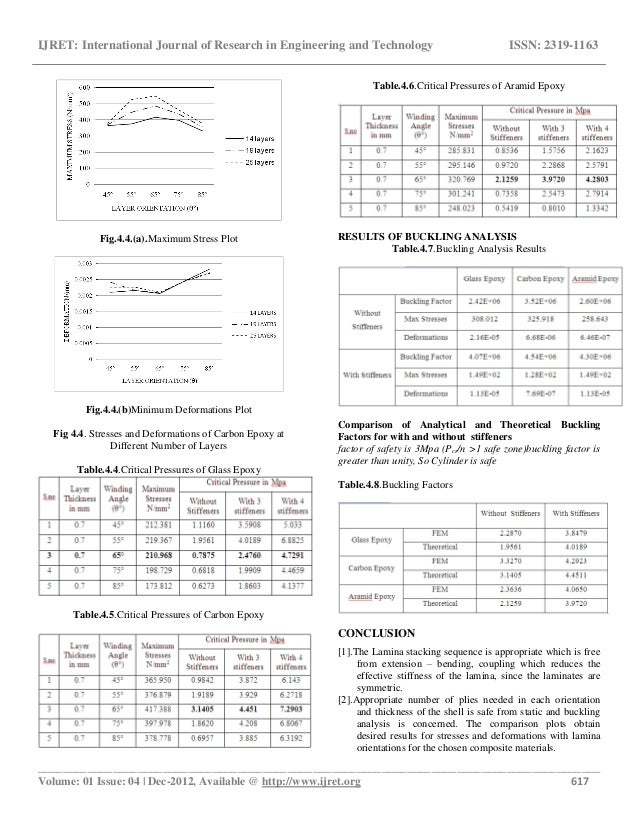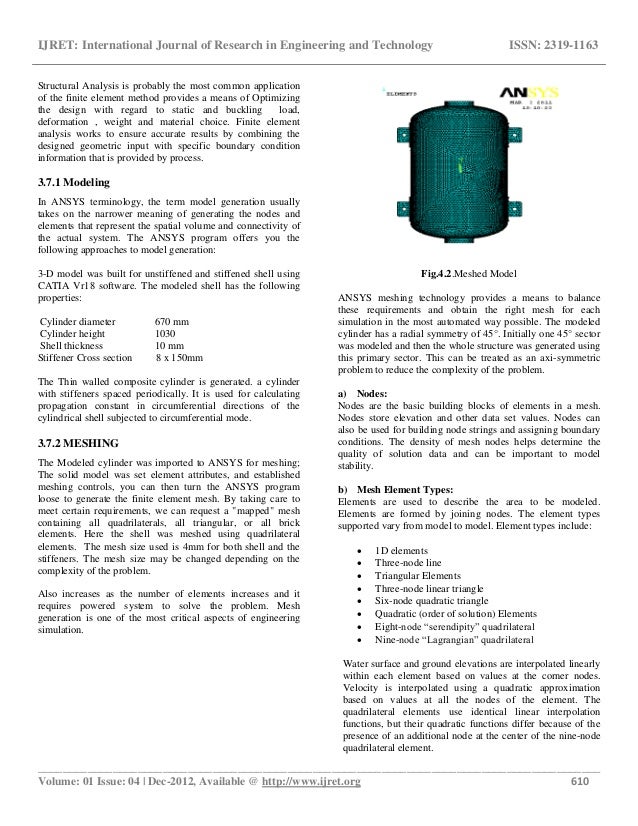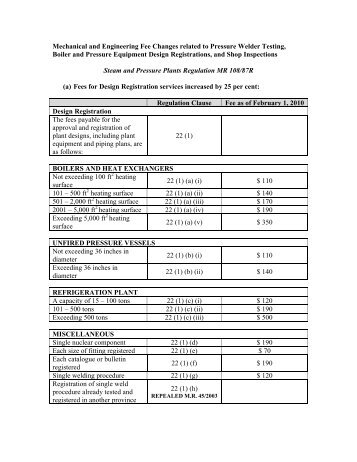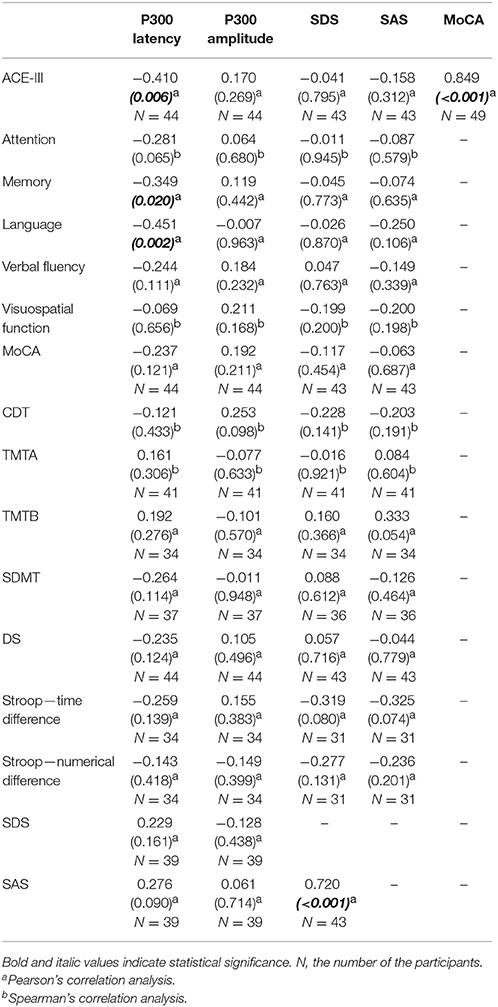Composite Pressure Vessels Pdf Editor


Pressure Vessel Design Manual Pdf

Moreover, the stacking sequence is very crucial to the strength of the composite material. This Project involves various objective functions such as stiffness, buckling load and Weight at each level of optimization. Usually composite pressure vessels are designed for. Buckling analysis on the pressure vessel has been studied. Cylindrical shells (see Fig.1.1) such as thin-walled laminated composite unstiffened vessels like deep submarine exploration housings and autonomous underwater vehicles are subjected to any combination of in plane, Out of plane and shear loads due.
Also, the AMT and MMSE outperformed the IQCODE in a population of geriatric patients. The MMSE has been found to be marginally better than the IQCODE in distinguishing cases of dementia from normal individuals in a memory clinic setting. However, the reverse appeared to be true in a study of patients attending a geriatric day hospital. It takes an estimated 10–15 min to complete. 
A multiscale modeling approach to analyze filament-wound composite pressure vessels is developed in this article. The approach, which extends the Nguyen et al. [Prediction of the elastic-plastic stress/strain response for injection-molded long-fiber thermoplastics. J Compos Mater 2009; 43: 217–246.] model developed for discontinuous fiber composites to continuous fiber ones, spans three modeling scales. The microscale considers the unidirectional elastic fibers embedded in an elastic–plastic matrix obeying the Ramberg–Osgood relation and J2 deformation theory of plasticity. The mesoscale behavior representing the composite lamina is obtained through an incremental Mori–Tanaka [Average stress in matrix and average elastic energy of materials with misfitting inclusions. Acta Metall 1973; 21: 571–574.] type model and the Eshelby [The determination of the elastic field of an ellipsoidal inclusion and related problems. Proc R Soc Lond, Ser A 1957; 241: 376–396.] equivalent inclusion method. The implementation of the micro–meso constitutive relations in the ABAQUS® finite element package (via user subroutines) allows the analysis of a filament-wound composite pressure vessel (macroscale) to be performed. Failure of the composite lamina is predicted by a criterion that accounts for the strengths of the fibers and of the matrix as well as of their interface. The developed approach is validated in the analysis of an aluminum liner – T300 carbon/epoxy pressure vessel to predict the burst pressure. The predictions compare favorably with the numerical and experimental results by Lifshitz and Dayan [Filament-wound pressure vessel with thick metal liner. Compos Struct 1995; 32: 313–323]. The approach will be further demonstrated in the study of the effects of the lamina thickness, helical angle, and fiber–matrix material combination on the burst pressure.
| 1. | Hamstad, MA, Chiao, TT, Patterson, RG. Fatigue performance of metal-lined graphite/epoxy pressure vessels. Composites 1975; 6: 249–253. Google Scholar Crossref |
| 2. | Shen, FC . A filament-wound structure technology overview. Mater Chem Phys 1995; 42: 96–100. Google Scholar Crossref ISI |
| 3. | Jorgensen, SW . Hydrogen storage tanks for vehicles: recent progress and current status. Curr Opin Solid State Mater Sci 2011; 15(2): 39–43. Google Scholar Crossref ISI |
| 4. | Ahluwalia, RK, Hua, TQ, Peng, JK. Technical assessment of cryo-compressed hydrogen storage tank systems for automotive applications. Int J Hydrogen Energy 2010; 35: 4171–4184. Google Scholar Crossref ISI |
| 5. | Fukunaga, H, Uemura, M. Optimum design of helically wound composite pressure vessels. Compos Struct 1983; 1: 31–49. Google Scholar Crossref |
| 6. | Lifshitz, JM, Dayan, H. Filament-wound pressure vessel with thick metal liner. Compos Struct 1995; 32: 313–323. Google Scholar Crossref ISI |
| 7. | Al-Khalil, MFS, Soden, PD, Kitching, R. The effects of radial stresses on the strength of thin-walled filament wound GRP composite pressure cylinders. Int J Mech Sci 1995; 38(1): 97–120. Google Scholar Crossref ISI |
| 8. | Zheng, JY, Liu, PF. Elasto-plastic stress analysis and burst strength evaluation of Al-carbon fiber/epoxy composite cylindrical laminates. Comput Mater Sci 2008; 42: 453–461. Google Scholar Crossref ISI |
| 9. | Chapelle, D, Perreux, D. Optimal design of a type 3 hydrogen vessel: Part I – Analytic modeling of the cylindrical section. Int J Hydrogen Energy 2006; 31: 627–638. Google Scholar Crossref ISI |
| 10. | Kobayyashi, S, Imai, T, Wakayama, S. Burst strength evaluation of the FW-CFRP hybrid composite pipes considering plastic deformation of the liner. Composites Part A 2007; 38: 1344–1353. Google Scholar Crossref ISI |
| 11. | Kang, S-G, Kim, M-G, Park, S-W. Damage analysis of a type 3 cryogenic propellant tank after LN2 storage test. J Compos Mater 2008; 42(10): 975–992. Google Scholar SAGE Journals ISI |
| 12. | Suemasu, H, Sakajiri, K. A failure mechanism of pressure vessels from filament-wound hoop layer. J Compos Mater 2010; 44(6): 657–673. Google Scholar SAGE Journals ISI |
| 13. | Tsai, SW, Wu, EM. A general theory of strength for anisotropic materials. J Compos Mater 1971; 5: 58–80. Google Scholar SAGE Journals ISI |
| 14. | Liu, PF, Zheng, JY. Progressive failure analysis of carbon fiber/epoxy composite laminates using continuum damage mechanics. Mater Sci Eng A 2008; 485: 711–717. Google Scholar Crossref ISI |
| 15. | Eshelby, JD . The determination of the elastic field of an ellipsoidal inclusion and related problems. Proc R Soc Lond, Ser A 1957; 241: 376–396. Google Scholar Crossref ISI |
| 16. | Mori, T, Tanaka, K. Average stress in matrix and average elastic energy of materials with misfitting inclusions. Acta Metall 1973; 21: 571–574. Google Scholar Crossref ISI |
| 17. | Nguyen, BN, Bapanapalli, SK, Kunc, V. Prediction of the elastic-plastic stress/strain response for injection-molded long-fiber thermoplastics. J Compos Mater 2009; 43: 217–246. Google Scholar SAGE Journals ISI |
| 18. | Nguyen, BN, Kunc, V. An elastic-plastic damage model for long-fiber thermoplastics. Int J Damage Mech 2010; 19(6): 691725–725. Google Scholar SAGE Journals ISI |
| 19. | Van Hattum, FWJ, Bernardo, CA. A model to predict the strength of short fiber composites. Polym Compos 1999; 20(4): 524–533. Google Scholar Crossref ISI |
| 20. | Aboudi, J . Mechanics of composite materials: a unified micromechanical approach. Studies in Applied Mechanics, 29. Amsterdam: Elsevier, 1991. Google Scholar |
| 21. | Kelly, A, Tyson, WR. Tensile properties of fibre-reinforced metals: copper/tungsten and copper/molybdenum. J Mech Phys Solids 1965; 13: 329–350. Google Scholar Crossref ISI |
| 22. | Nguyen BN. EMTA-NLA’s user guide. Technical report, Pacific Northwest National Laboratory. Report no. PNNL-20013, 2010. Google Scholar |